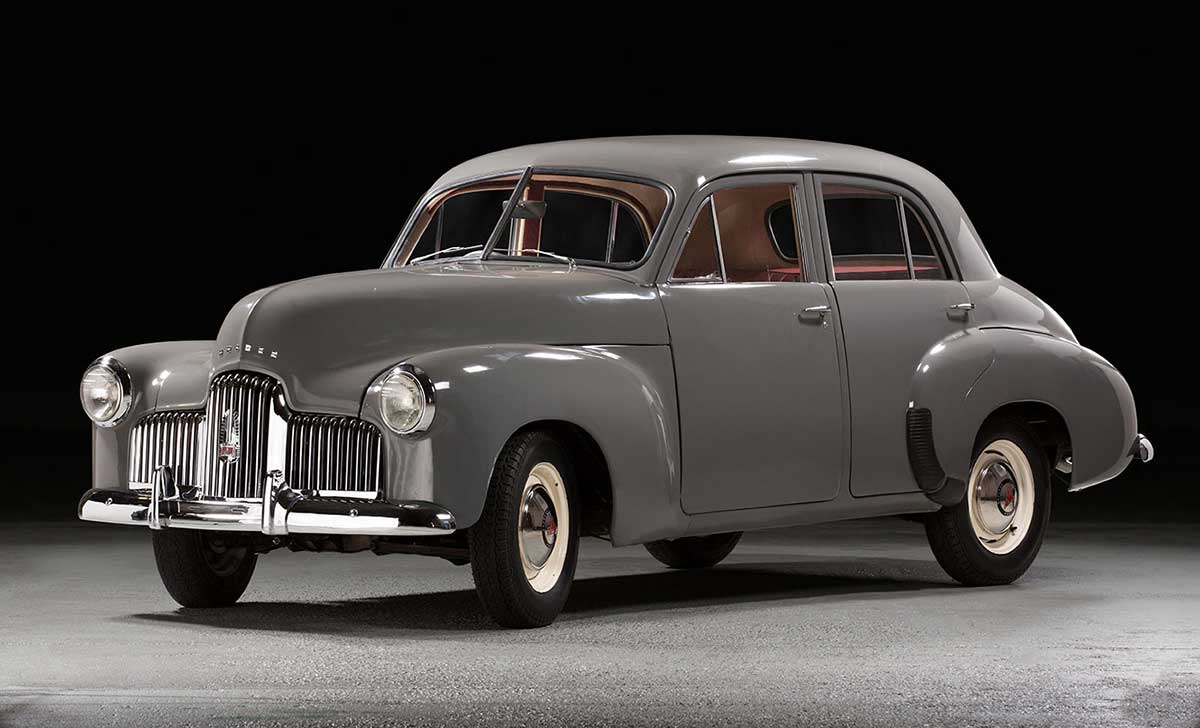The Holden car heralded a new era in Australian motoring and this vehicle is believed to have been the first sold commercially.
It was delivered to industrialist Essington Lewis (1881–1961) on the eve of 24 February 1949, a day before the first Holdens were released for sale to the general public.
Lewis, managing director of the BHP mining company and wartime director of munitions, had given crucial help to the Australian car project from its inception during the Second World War.
Return to the family
Holden's first model, the 48-215, was popularly known as the FX and preceded the iconic FJ.
The Lewis family used the FX for a number of years before it was sold to the manager of the Lewis property, near Tallarook in Victoria, and then to a local rabbiter.
Having fallen into disrepair it was subsequently salvaged by Mary Munckton, Essington Lewis' daughter. Ian Metherall arranged for it to be restored in 1987 and it was acquired by the National Museum in 2004.
Holden in history
The first Holden car officially rolled off the General Motors-Holden assembly line at Fishermen's Bend, Victoria, on 29 November 1948. A new era in Australian motoring had begun.
Holden vehicles starting with the 48-215, quickly became an Australian institution. By 1958 Holden claimed 43 per cent of car sales in Australia. A million had been sold by 1962.
This vehicle is a representation of the key role played by Lewis in the development of 'Australia's own car', a reflection of post-World War Two national aspirations and an icon of 1950s Australian society.
It marks the emergence of an Australian automobile industry, which contributed significantly to the increasing prosperity of Australians in the post-war years.
It is also connected to a leading figure in Australia's 20th century industrial and economic life.
Donated by Mary Munckton and Ian Metherall
In our collection
